Type species: Sphinx tancrei Staudinger, 1887.
A Palaearctic genus of seven species, two of which occur in the western half of the region. Very closely related to Sphingulus Staudinger, 1887 and Kentrochrysalis Staudinger, 1887 from the eastern Palaearctic.
IMAGO: Antennae short, slender, terminally hooked, with longer ciliae along basal half. Pilifer reduced to a tubercle and bearing a few bristles and scales (no scales in D. inexacta Walker, 1856). Tongue reduced, as are palpi. Tibiae without spines, but hind-tibia with two pairs of very reduced spurs. There is no mid-tarsal comb. Pulvillus and paronychium present, but paronychial lobes reduced.
Genitalia. In the male, uncus broad and short, triangularly narrowed at end, minutely sinuate; upperside scaled mesially. Gnathos with two short, straight processes. Phallus armed with an apical tooth, curving sinistro-laterad. There is no patch of modified scales on the inner surface of the valva; the latter small, but robust ventro-basally. Harpe large, with a broad ventro-distal process and three rounded dorsal lobes. In the female, the ostium bursae is large and surrounded by a feebly chitinized lamella; inner edge of latter armed with two processes.
OVUM: Ovoid, pale yellowish green.
LARVA: In those species in which it is known, very similar to Smerinthus but with a long, straight, granulose horn and a pale suffusion below each lateral stripe.
PUPA: Similar to Smerinthus. Proboscis fused to body. Cremaster elongate, with a pair of small apical spines and lateral spines.
HOSTPLANT FAMILY: Usually trees and shrubs of the Oleaceae.
UK: Small Grizzled Hawkmoth, CZ: Lišaj jaseňový, FIN: Kaakonkiitäjä, RO: Sfinxul frasinului.
Dolbina elegans elegans A. Bang-Haas, 1912, Dt. ent. Z. Iris 26: 229.Type locality: Iskenderun, 'northern Syria' [southern Turkey].
(Taxonomic note. As there are no significant or consistant differences between the DNA barcodes, genitalia and morphology of Ukrainian, Bulgarian, Turkish and Syrian examples, subspecific status cannot be justified for any population of this species.)
[Further details on this species, as well as photos of all stages, can be found on Lepiforum.]
Holarctic; western Palaearctic region. Pleistocene refuge: Monocentric -- Syrian refuge.
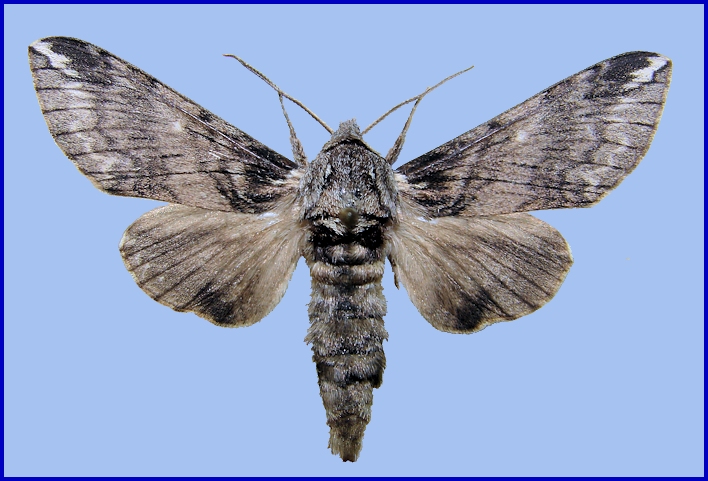
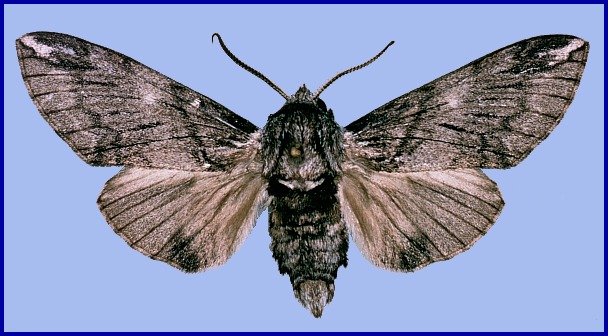
Wingspan: 40--53mm. As illustrated. Very easily overlooked or confused with various other small moths when captured in a light-trap.
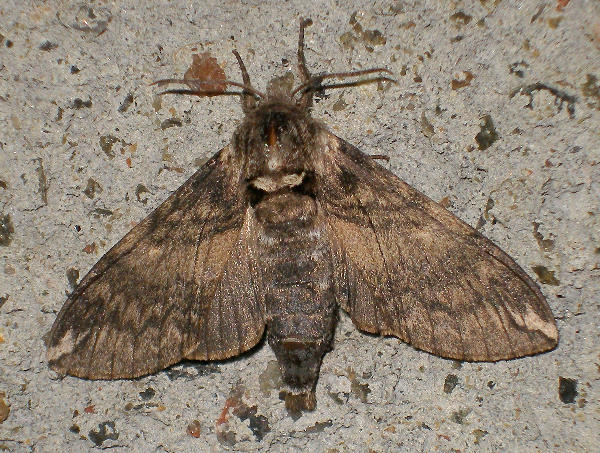
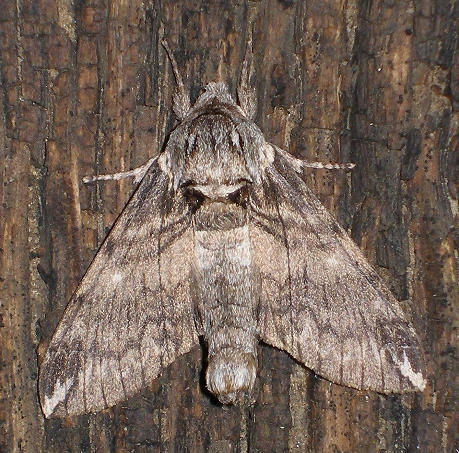
Mainly a species of light forest and scrubland along alluvial floodplains in valleys with cultivation, as well as wooded ravines which occur off these. Indeed, due to overgrazing and habitat destruction, it may only occur in the latter in some areas of the Middle East. In Israel and Jordan confined to riverine woodland in damp canyons (Müller et al., 2005a & 2005b). A common feature of such habitats is that they are damper than surrounding areas, with good numbers of smaller Fraxinus trees and patches of closed-canopy woodland. The first European specimens were taken on the balcony of a tourist hotel at the Black Sea coastal resort of 'Sunny Beach', near Nessebar, Bulgaria (Soffner, 1959)!
Not a very active species, with adults flying for only a short period after nightfall, the males usually quite close to the ground (Boyan Zlatkov, pers. comm 2009). Females prefer the crowns of ash (Fraxinus) trees growing along the edges of woodland. In males at rest, the posterior tip of the abdomen is curved upward in a manner similar to that of Mimas tiliae.
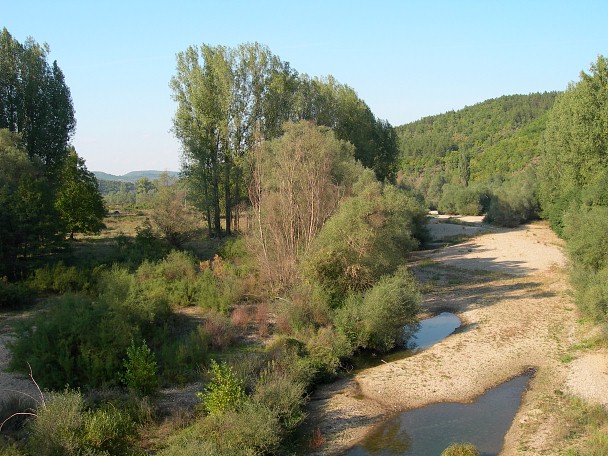
April/May to early September in two or sometimes three broods. In Europe, mainly in July (Popescu-Gorj, 1971; Ganev, 1984; Eitschberger & Gurko, 2017), although in southern Bulgaria it is regularly taken in April (S. V. Beshkov, pers. comm.) as well as in June/July. The single specimen from northern Jordan was captured in late April 1999 at 1000m altitude (Müller et al., 2005a). Recorded as being 'common' in the Pustnicu Forest (Romania) during 26.vii-6.viii.2008, and around Odessa, Ukraine, from late July to late August (Khalaim, 2015; Eitschberger & Gurko, 2017).
OVUM: Undescribed.
LARVA: Yellowish on hatching (Soffner, 1959), turning glaucous-green with feeding; becoming very elongate with growth. By the third instar the elongate body is still glaucous green, but with a bold white dorso-lateral line, which extends from the head to the base of the long and straight horn. The horn is also white, somtimes pinkish, with a bold, white, oblique lateral streak extending down from its base to the final proleg. In many there are no other oblique lateral streaks, although a pale and faint wavy line may extend the length of the side. Others bear the standard seven oblique lateral streaks. Conical head and anal claspers also edged white; true legs and prolegs same colour as the body. The pale oblique lateral streaks become edged frontad with rusty-red in the fourth instar, as do the pale cheek stripes.
In the final instar very similar in shape to that of Mimas tiliae. However, the horn is very straight and long, and in some individuals the whole glaucous-green body may become suffused with rusty-red, even the horn and head. Otherwise, the markings remain the same as seen in the third instar. Also, like Mimas tiliae, this is a canopy-feeding species, with a preference for trees growing along the egdes of woodland.
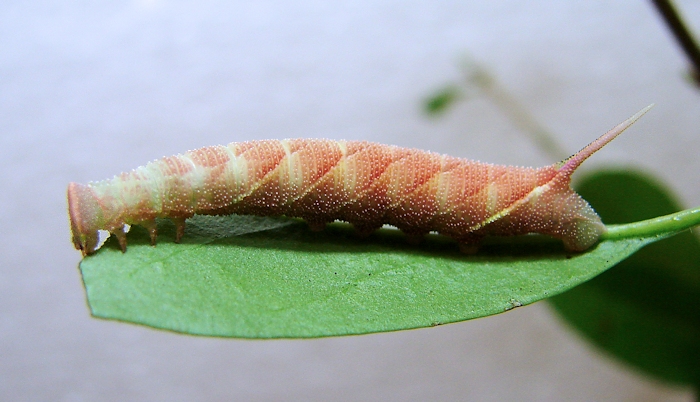
Hostplants. Has been found on species of Fraxinus, as per the Asiatic species of Dolbina; however, larvae from the Odessa region, Ukraine, much preferred Ligustrum to Fraxinus in captivity (Serge Yevdoshenko/Vladimir Kiselev, pers. comm. 2015).
PUPA: Undescribed. Presumably the overwintering stage.
Unknown.
From the Ukraine (Nikolaev & Plyushch, 1994; Khalaim, 2015; Eitschberger & Gurko, 2017; Khalaim, 2022), Moldova (Plugaru, 1971; Dubatolov, [1999]; Timuș, Baban & Calestru, 2017; Tugulea & Tugulea, 2020), through eastern Romania (Popescu-Gorj, 1971; Székely, 2012; Manci, Sitar, Corduneanu & Balan, 2015), eastern and southern Bulgaria (Soffner, 1959; Ganev, 1984; Karisch, 1990; Beshkov, 1995; Beshkov & Langourov, 2004; Beshkov, 2009; Hristova & Beshkov, 2016), northern Greece, western, southern and eastern Turkey (de Freina, 1979; Okyar & Aktaç, 1997); Ayberk & Akkuzu, 2005; Akkuzu, Ayberk & Inac, 2007; Akin, 2012; Seven, 2020; Kemal & Koçak, 2016; Koçak & Kemal, 2018; Kemal, Koçak & Uçak, 2018; Seven & Aykal, 2022) to northern Syria (Bang-Haas, 1912; Daniel, 1939), northern Jordan (Müller et al., 2005a), Israel (Kernbach, 1959; Bytinski-Salz, 1966; Müller et al., 2005b), northern Iraq (Wiltshire, 1957) and northern Iran. (The distribution given may represent ease of access to localities rather than actual distribution and this species may also occur in other areas.)
Locations for Bulgaria are: Burgas; Varvara (Karisch, 1990); Nesebur; Dobri Dol; Achtopol; Kermen; Primorsko; Krumovgrad (Harry Rutherford, iNaturalist 2024); Arkutino (Ganev, 1984); Sakar Mountains; Eastern Rodopi Mountains; 'Strandzha' Natural Park (Beshkov, 2009). Locations for Romania are: Oltenia; Muntenia; Bezdead; Moldova; Pustnicu Forest (east of Bucharest).
Capture dates for Dolbina elegans indicate that it is a recent colonist of Europe, having made landfall in Bulgaria during the 1950's from, presumably, mainland Turkey. It has since spread north and west, and continues to do so, with Odessa, Ukraine, being the northern limit (Khalaim, 2015; 'pineconejam', iNaturalist 2018).
Extra-limital range. None.
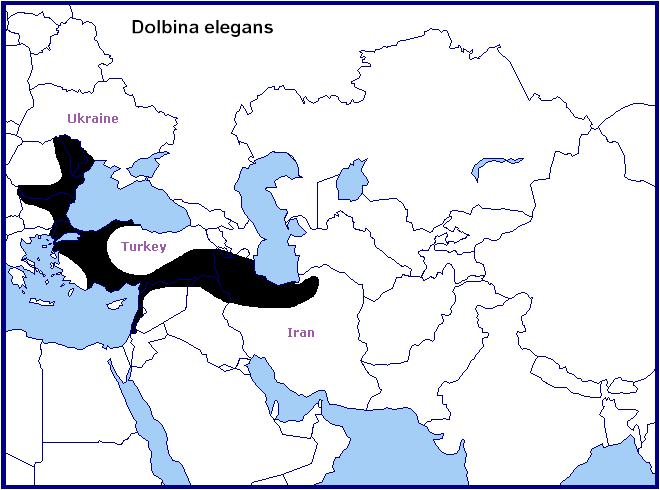
 Return to species list
Return to species list